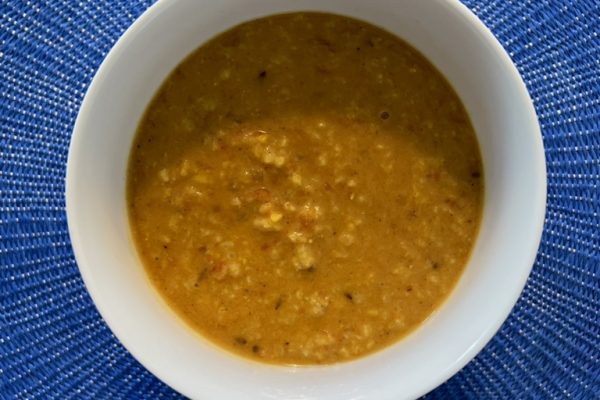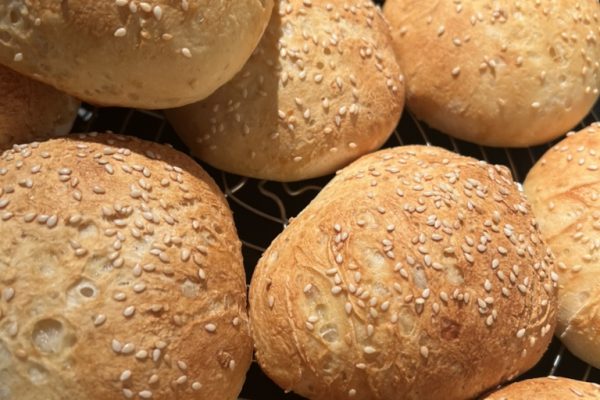You won’t find Singapore noodles (Singapore Mei Fun) in Singapore. They originate from Hong Kong, which is a good 2,500 km to the north-east.
This is a classic example of a dish that was created through the fusion of different national cuisines, probably sometime in the 1950s or 60s, when Cantonese cuisine became increasingly internationalised. A key element is the use of curry powder. Perhaps this is where the name ‘Singapore’ comes from, because curry, which plays no role in traditional southern Chinese cooking, is associated with Southeast Asia, where Indian-style curries are ubiquitous.
Singapore noodles are street food, so there are no fixed rules regarding their composition. Vegetables and egg, prawns and pork or tofu are common ingredients, and the base is always very thin rice noodles. If you want to prepare a vegetarian or vegan version of this dish, there are no obstacles. The oyster sauce we use only appears in some of the recipes and can easily be omitted.
Above all, we want to explain how to prepare the noodles, which is not entirely straightforward. However, once you have learned how to handle them properly, they will greatly enrich your cooking.
The rice noodles required are often referred to as rice vermicelli and are very thin (though not as thin as angel hair pasta, which we do not recommend using). Vermicelli cooks very quickly and is therefore easily overcooked, turning it into a kind of mush. They also stick together quickly.
You can cook the noodles very briefly (only about 90 seconds), leave them to cool without rinsing them, and then carefully separate them a little, but this is only for experienced users. It is easier to let time do the work for you. Place the noodles in a suitable container, pour plenty of hot, but no longer boiling, water over them and wait.
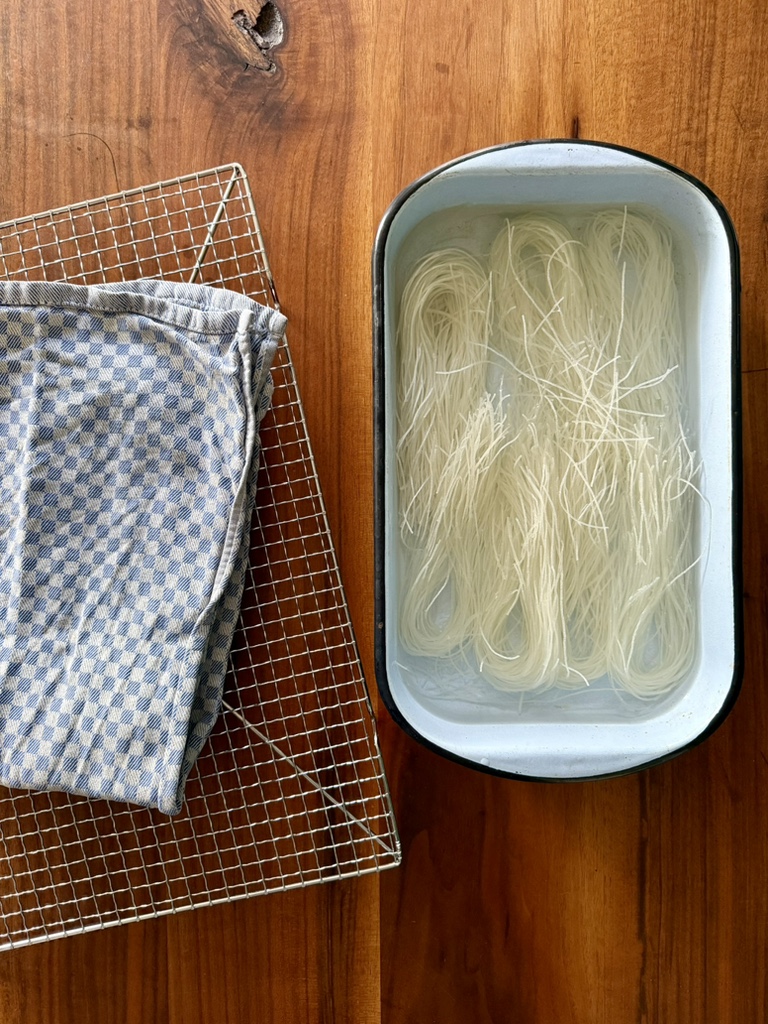
You could even rehydrate these noodles completely in water at room temperature. Heat speeds up this process, but it is not essential. Without heat, the noodles take around 30 minutes to rehydrate, whereas with hot water it only takes 15–20 minutes. So you can set an alarm and try them for the first time after 15 minutes: the vermicelli should be al dente but no longer raw in the centre and completely flexible. If they are not ready yet, simply wait. With this technique, you will never overcook them.
Once they are soft enough, spread them out on a clean cloth. They will stick together wherever they touch – but much less so than if you were to pour them into a sieve. Don’t be put off by the sticking, as it will all come apart again later.
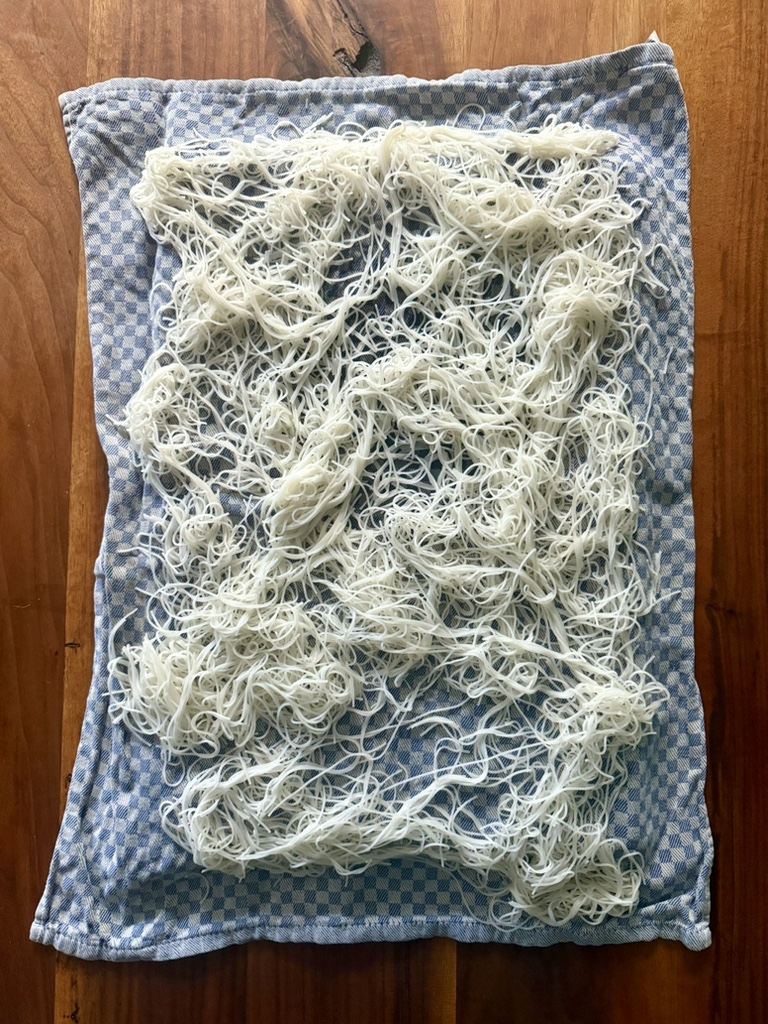
Typical proteins in this dish are egg, cooked pork and/or prawns. But these are not mandatory. Tofu works wonderfully. The pork is typically char siu, a Cantonese grilled roast. But cooked ham is also common. Here in Germany, we simply use Kasseler, which is cured and lightly smoked pork. We also use one egg per person and (frozen) prawns.
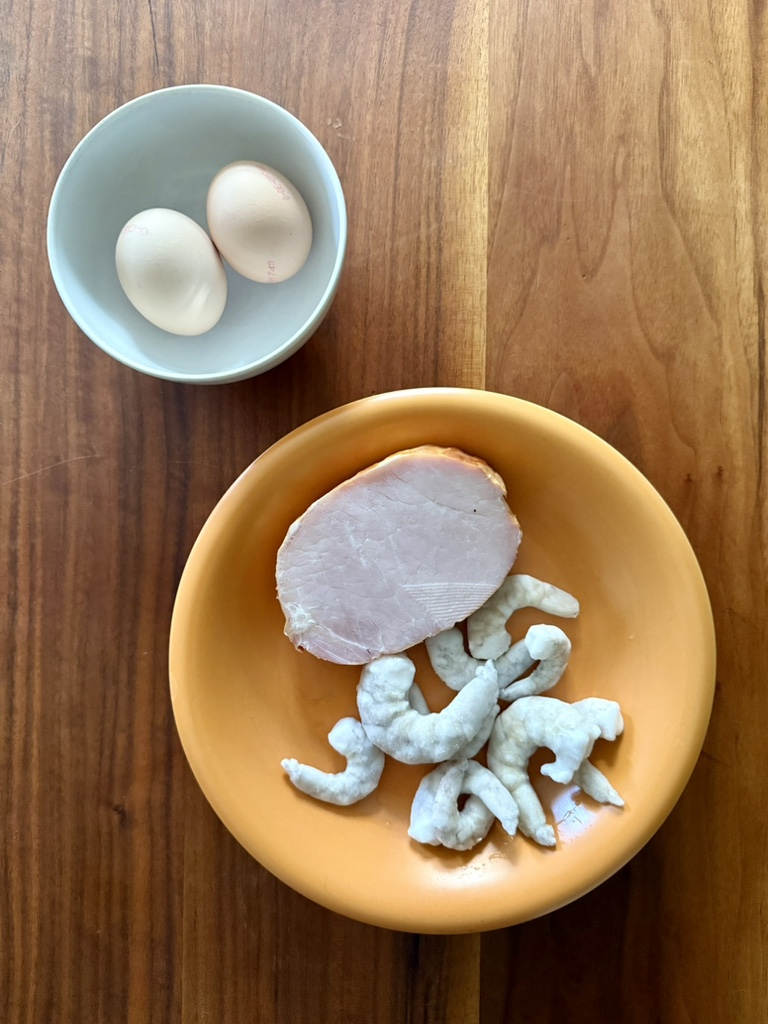
Classic vegetables include onions, carrots, peppers, napa cabbage and bean sprouts. However, the latter were nowhere to be found in our shops today. We cut the onions and peppers into thick strips and the carrots into very fine strips. We simply cut the cabbage leaves into larger pieces, as they will wilt a little when heated anyway. We also use ginger, garlic and fresh chilli for flavour. Spring onions are a must; they are cut into pieces about 3 cm long.

The seasonings are primarily soy sauce and Shaoxing cooking wine. We also use a little oyster sauce. Then there is a little sugar and curry powder. Some recipes also call for sesame oil and some call for white pepper. We mix the soy sauce, oyster sauce, sugar and curry powder, and use the Shaoxing cooking wine separately.
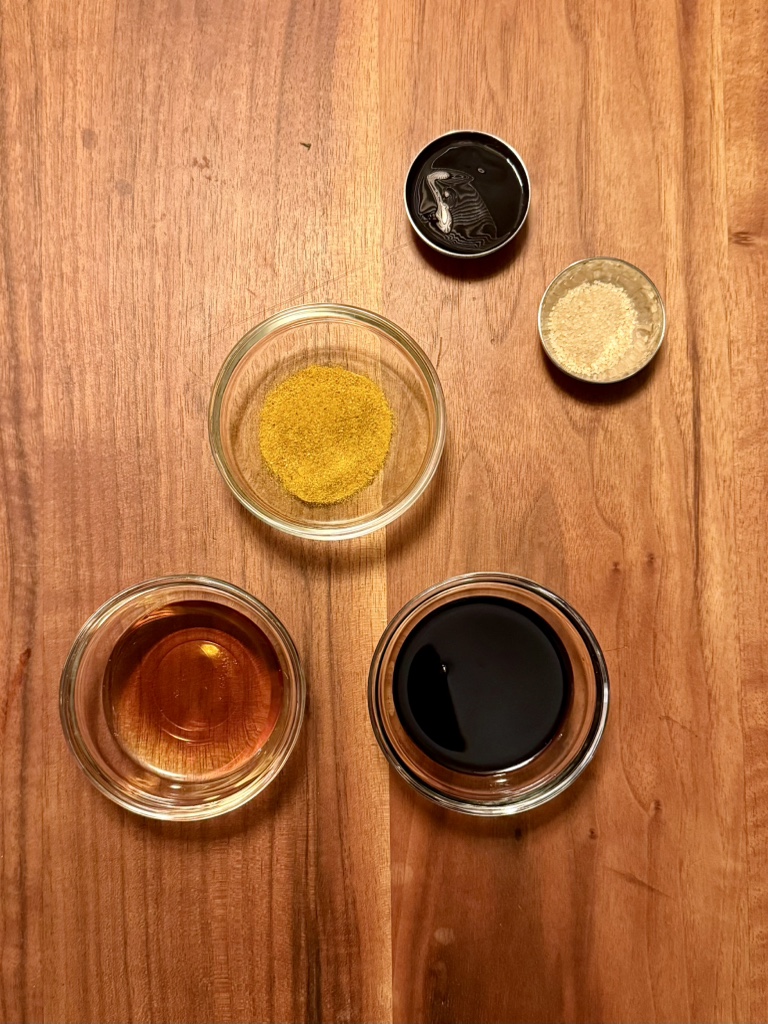
We whisk the eggs and fry them with a little neutral vegetable oil: hot wok, a dash of oil, add the eggs and swirl the wok once – they are already cooked and we break them into pieces.
As always when cooking with a wok, all the ingredients must be ready at the stove, because from here on, everything happens very quickly.
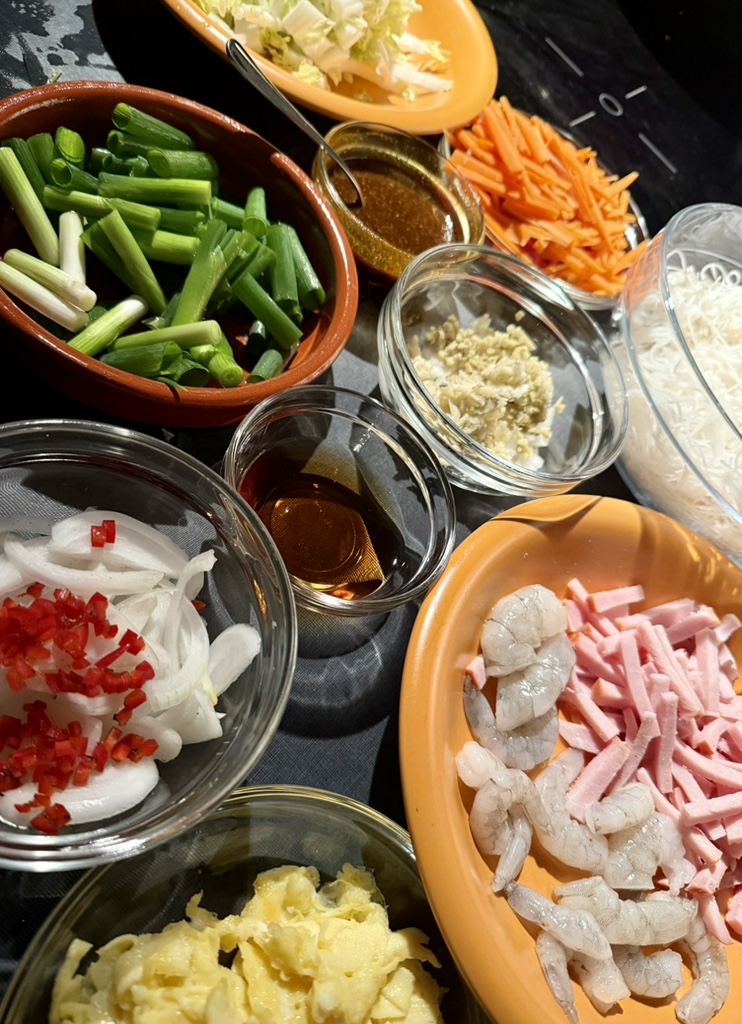
Now fry the meat and prawns in very little oil in the very hot wok. After a maximum of one minute, everything is ready and we deglaze with Shaoxing cooking wine.
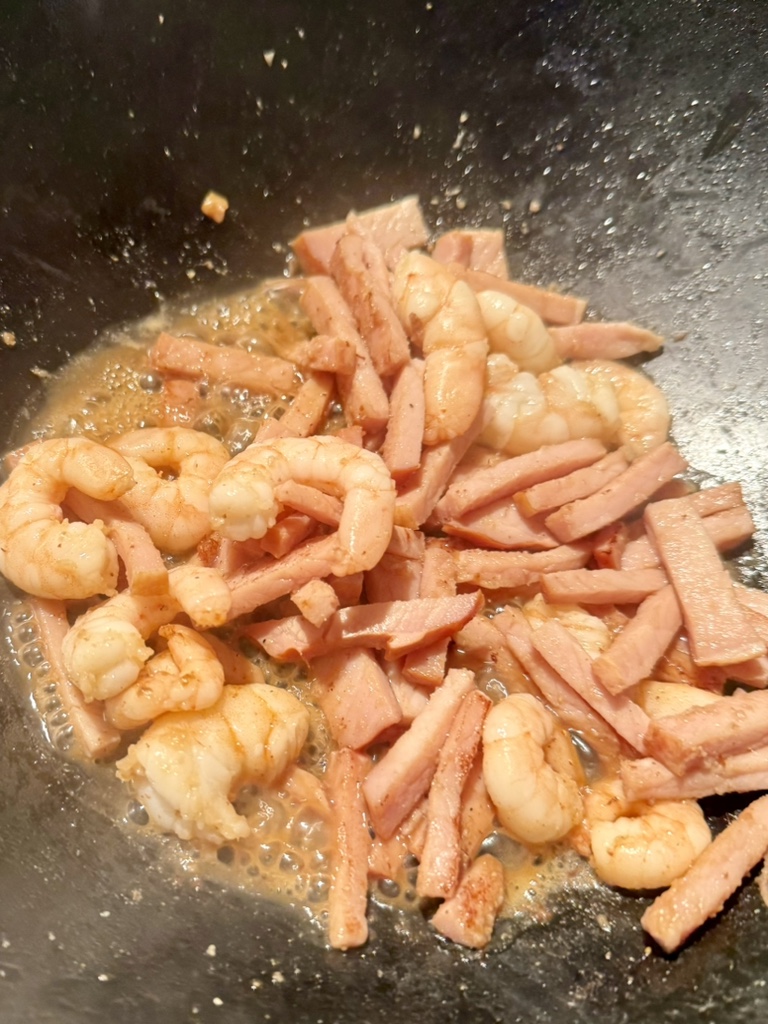
Set this aside and stir-fry the ginger and garlic in a little more oil for 30 seconds…
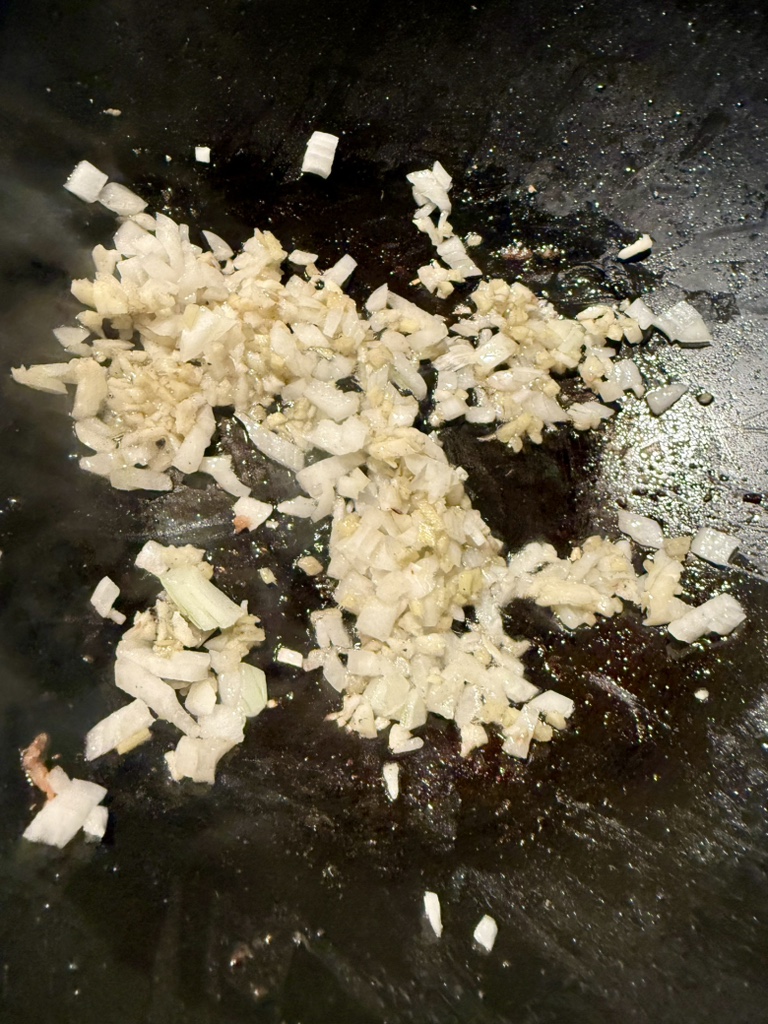
…before adding the other vegetables to the wok, but not the tender cabbage leaves yet.
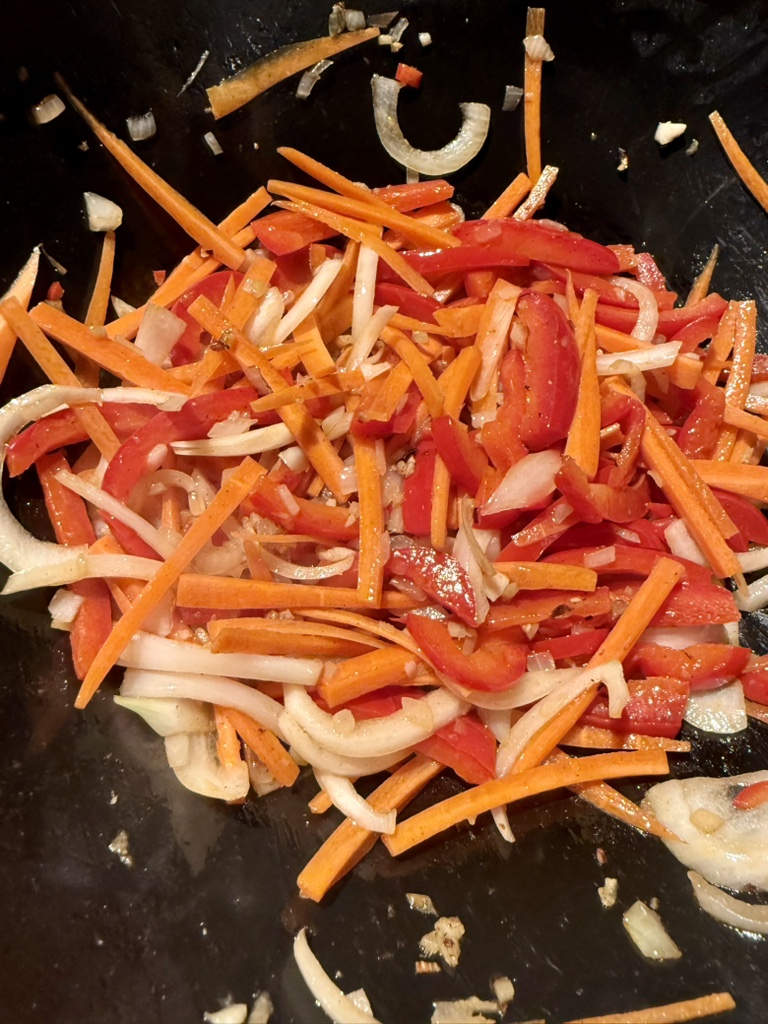
Once the vegetables are cooked, which takes no more than a minute, add the napa cabbage.
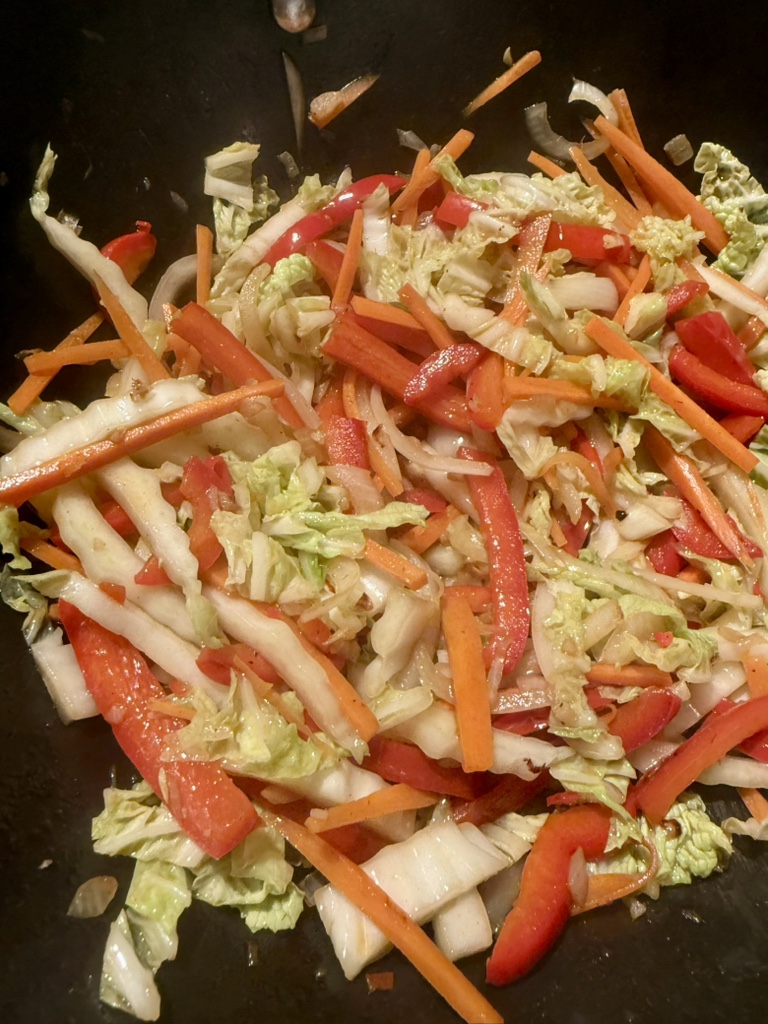
After another 30 seconds, we set this to the side as well.
Again, using very little oil, add the rice vermicelli to the wok, immediately pour over the sauce mixture and stir-fry until they are completely coated. This will also separate them from each other.
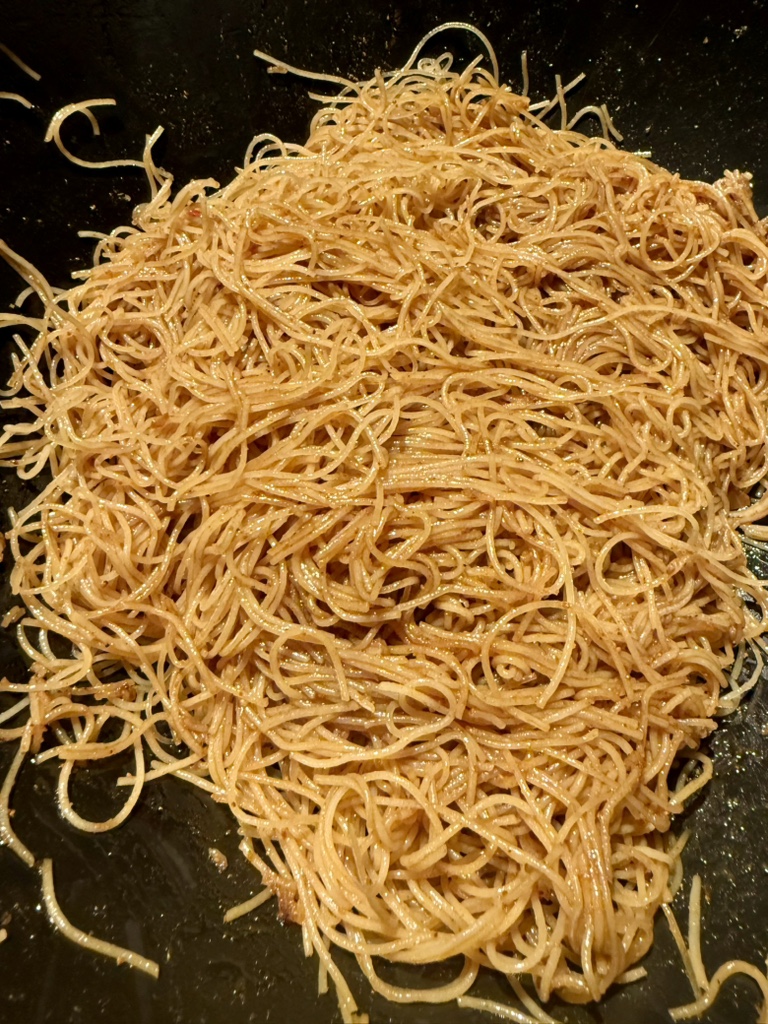
Then add all the prepared ingredients (egg, meat, prawns, vegetables) and the spring onion pieces, which should not remain raw but particularly crisp.
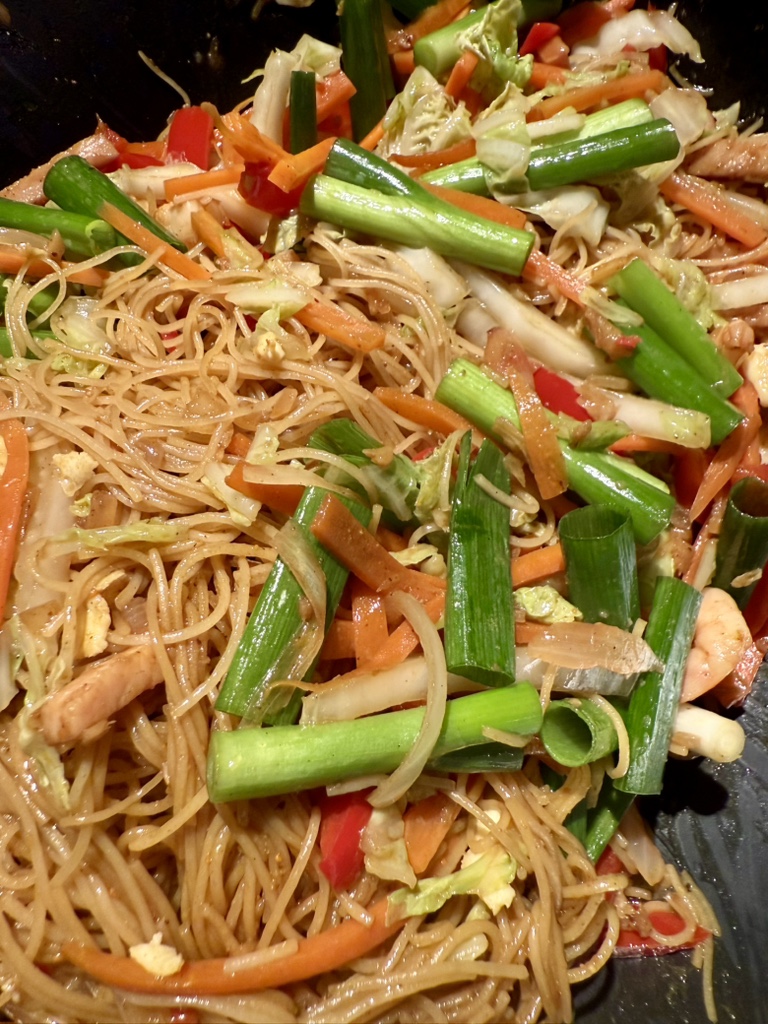
Heat everything thoroughly once more, tossing constantly, then it’s ready to serve.
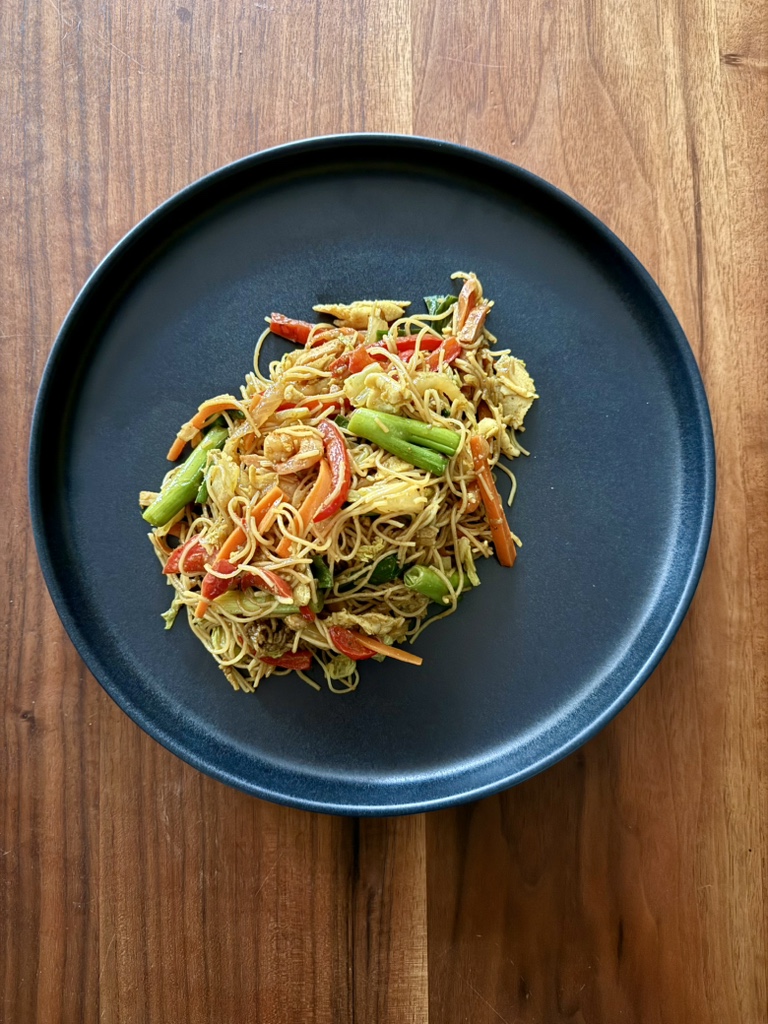
Enjoy.
And may the taste be with you.
Ingredients (for 2 people):
200 g thin rice vermicelli
2 tbsp neutral vegetable oil
2 eggs
100 g cooked pork such as ham or smoked pork (classic: char siu, Cantonese roast pork)
150 g prawns
2 tbsp Shaoxing cooking wine
Some onion, carrot, bell pepper, bean sprouts and napa cabbage
1 cm ginger
2 cloves of garlic
Optional: 1 fresh or dried chilli
3 tbsp soy sauce
1 tbsp oyster sauce
1 tsp sugar
2 tsp curry powder (optional: plus ½ tsp turmeric, just for the colour)
Optional: A little sesame oil and/or white pepper
2 spring onions

